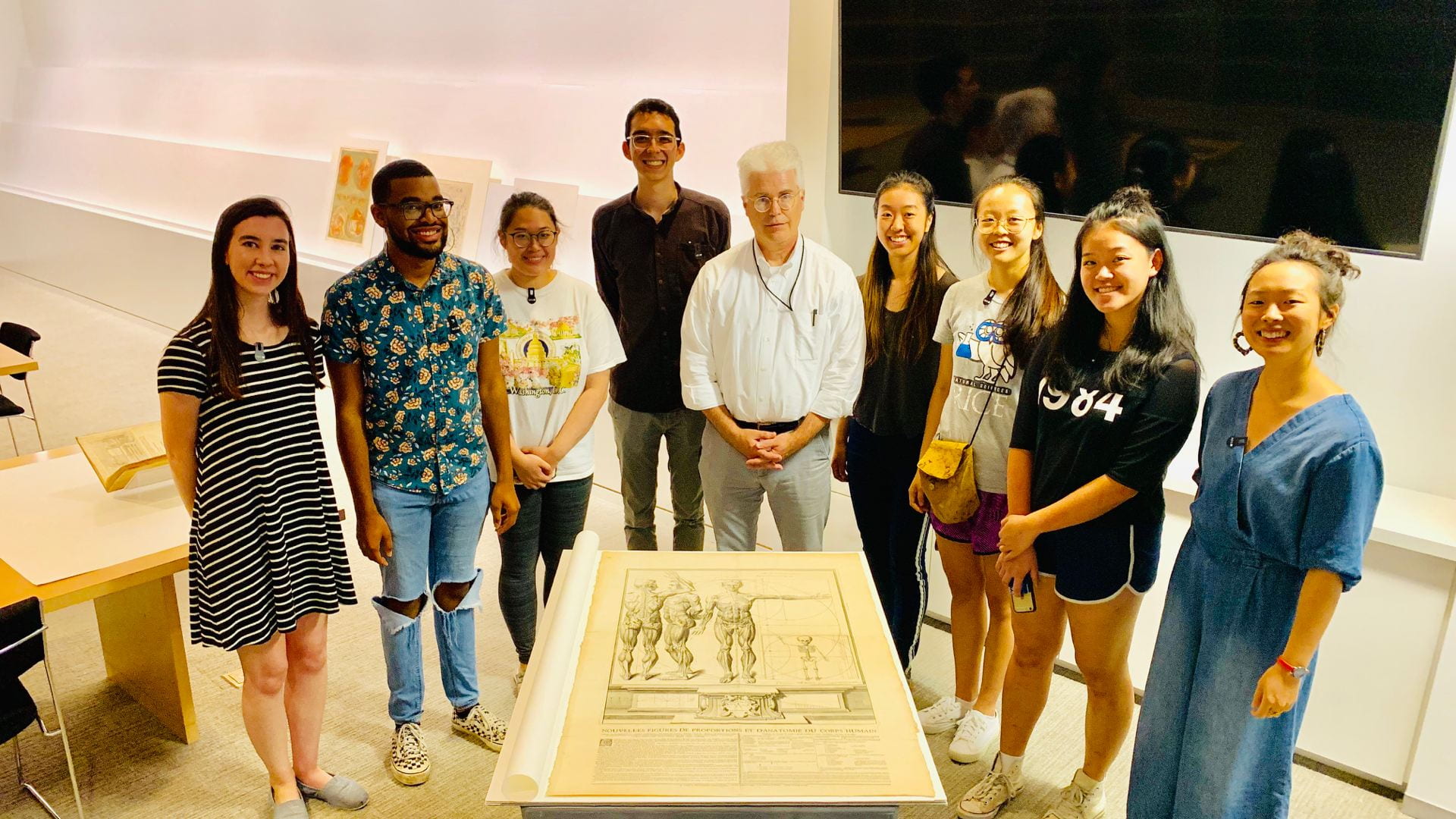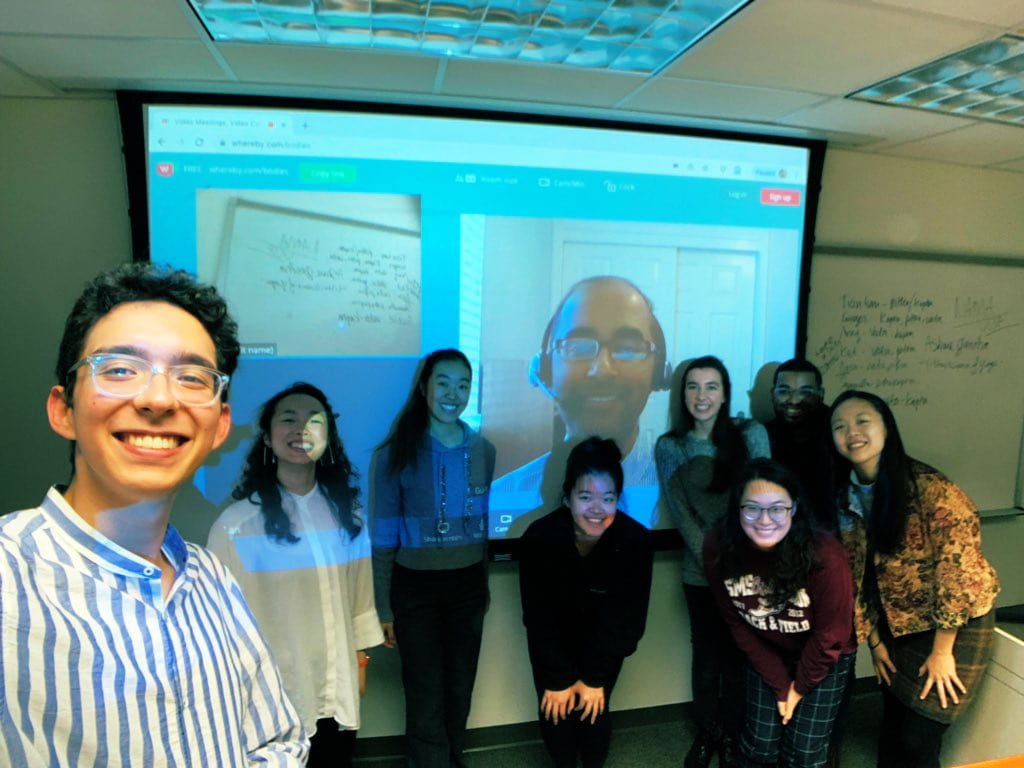This class introduces how people in different parts of the world have understood why we get sick and how we get better. How did the “same” body look so profoundly different across time and place? To answer this question, we will look at medical histories through a diverse range of perspectives with visits to collections at the Museum of Fine Arts and the Texas Medical Center. From closely reading bodies—how they looked and the contexts in which they developed—this class will teach new approaches to understanding practices associated with Traditional Chinese Medicine, Ayurveda, Galenic medicine, and more.
LEARNING OUTCOMES
In this course, students will learn how to 1) comprehend different frameworks for dealing with disease and the body, 2) grasp the conditions that lead to medical plurality, 3) compare different historical moments of diverse theory and practice, 4) closely read and contextualize primary sources, and 5) develop visual and oral skills for communicating original research questions.
Assignments
The following set of assignments are an opportunity for you to craft your own narrative about the body in global histories of medicine. In the beginning of the semester, you will choose one visual primary source and use it to guide new sets of research questions about how the image was made, who made it, the kinds of ideas that it engendered. Keep in mind the three themes that shape the arch of the class (bodies, global networks, and histories of medicine), including inherent assumptions that shaped what bodies look like, what caused illnesses, and would helped people recover from disease.
Assignment #1 ONE IMAGE, THREE FIELD NOTES (20%)
This first assignment will engage with a close reading of a kind of “body”—either non- human or human—by recreating it. For instance, you can choose an image from the National Library’s Hidden Treasure exhibition, or another image or model of your choice. In your process of reconstruction, consider the original scale of the image, how it was made, what materials were used, and who was involved. Then, to your best ability, acquire the materials to reproduce the image to scale. Provide a 500-word description of your process, introducing the image/object before relaying the liberties you took, as well as three field notes. Images should be approved by the instructor beforehand.
Assignment #2 RESEARCH ESSAY (20%)
In this second assignment, embed your primary source within a broader historical context. What was the afterlife of the image? How did it change through trade and translation? Further, consider how these moments of trade and translation reframe conceptions of the “global” through local or personal encounters. Keep in mind how at different historical periods objects like drugs, food, organs, created particular networks of knowledge and the political conditions shaped different ways of knowing, seeing, touching, and describing the “body.” Research essays should be 2000 words. Prepare an outline to be approved by the instructor.
Assignment #3 PODCAST (20%)
Based on the research questions you developed in your previous assignments, produce a 5-minute podcast with a thoroughly-research script of no more than 650 words not including references. The goal of this assignment is to critically address assumptions about how knowledge about the body was engendered in different historical periods. Consider what the sound medium can add to your argument/message. The same rules of avoiding cliché and qualifying words like the “body” apply. Topics should be proposed beforehand and approved by the instructor.
COURSE SCHEDULE
PART ONE
HOW BODIES LOOK
Week 1 | Foundations
8/26 Course introduction
8/28 Shigehisa Kuriyama, “Preface,” Expressiveness of the Body
8/30 Shigehisa Kuriyama, “Grasping the Language of Life,” Expressiveness of the Body
Week 2 | Physical Forms
9/2 No class
9/4 Shigehisa Kuriyama, “The Expressiveness of Words,” Expressiveness of the Body 9/6 Galison & Daston, “Epistemologies of the Eye,” Objectivity
MEET AT THE MFA
Week 3 | People on Paper
9/9 Shigehisa Kuriyama, “Muscularity and Identity,” Expressiveness of the Body 9/11 Helen King, “Picturing the Womb,” One-Sex Body on Trial
9/13 Jack Hartnell, “Head,” Medieval Bodies
MEET AT THE MAKER SPACE
Week 4 | Alternative Anatomies
9/16 Katharine Park, “Holy Anatomies,” Secrets of Women
9/18 Manfred Ulmann, “Physiology and Anatomy,” Islamic Medicine 9/20 Shigehisa Kuriyama, “The Imagination of the Body”
Week 5 | Gendered Illnesses
9/23 Afsaneh Najmabadi, “Early Qajar,” Women with Mustaches 9/25 Sabine Wilms, “Ten Times More Difficult to Treat”
9/27 Sabine Frühstück, “Male Anxieties,” Building a Modern Japan
ASSIGNMENT #1 FIELD NOTES DUE
Week 6 | Diseases of the Soul
9/30 Noga Arikha, “Harmonies and Melancholy Souls,” Passions and Tempers 10/2 Rublack & Selwyn, “Fluxes: The Early Modern Body and the Emotions” 10/4 Warwick Anderson, “Stranger Relations,” Collector of Lost Souls
Week 7 | People Problems
ASSIGNMENT #2 INTRODUCTION & OUTLINE DUE
10/7 David S. Jones, “Virgin Soils Revisited”
10/9 Projit Mukharji, “From serosocial to sanguinary identities”
10/11 Kieth Wailoo, “How the Other Half Dies,” How Cancer Crossed the Color Line
Week 8 | Never Better
10/14 No class
10/16 Chris Feudtner, “A Disease in Motion,” Bittersweet
10/18 Allan Brandt, “More Doctors Smoke Camel,” Cigarette Century
Week 9 | Contagious Diseases
10/21 Shigehisa Kuriyama, “The Imagination of Winds”
10/23 Angela Leung, “Li/Lai/Dafeng/Mafeng,” Leprosy in China
10/25 Angela Leung, “The Dangerously Contageous Body,” Leprosy in China
PART THREE
HOW DO WE GET BETTER?
Week 10 | Being Better
ASSIGNMENT #2 ESSAY DUE
10/28 Shahzad Bashir, “Introduction,” Sufi Bodies
10/30 Shahzad Bashir, “Miraculous Food,” Sufi Bodies
11/1 Pierce Salguero, “Understanding the Dosa,” Buddhism and Medicine
Week 11 | Regeneration
11/4 Wragge-Morley & Li, “Thinking Organs” Metaphors of the Mind
11/6 Dominik Wujastyk, The Roots of Ayurveda
11/8 Nick Hopwood, “The Keywords ‘Generation’ and ‘Reproduction’” Reproduction ASSIGNMENT #3 STORYBOARD DUE
Week 12 | Drugs
11/11 Stanley-Baker & Yang, “Dung, Hair, and Mungbeans,” Buddhism and Medicine 11/13 Pablo Gomez, “Social Pharmacopeias” Experiential Caribbean
11/15 Jeremy Greene, “Drugs Anonymous,” Generic
Week 13 | Transplants
11/18 Thomas Schlich, “The Invention of Organ Transplantation”
11/20 Thomas Schlich, “Laboratory and Clinic: Organ Replacement for Diabetes” 11/22 Sherine Hamdy, “Transplanting God’s Property ” Our Bodies Belong to God
Week 14 | Coda
11/25 Scheper-Hughes, “The Global Traffic in Human Organs” 11/27 Editing Lab
11/29 Thanksgiving!
Week 15 | Presentations
12/2 Presentations





